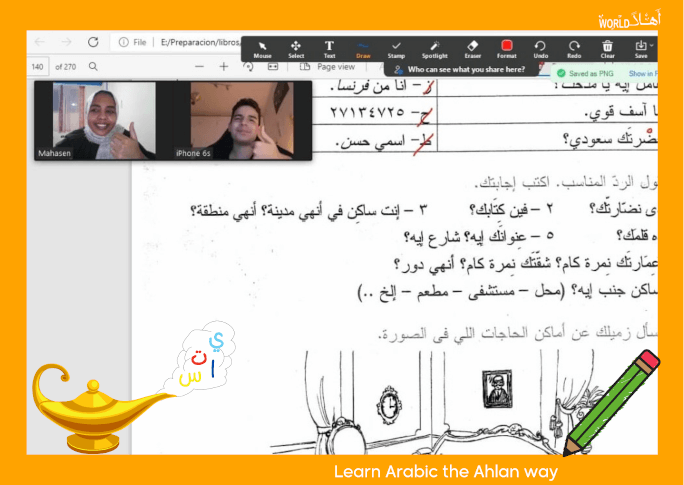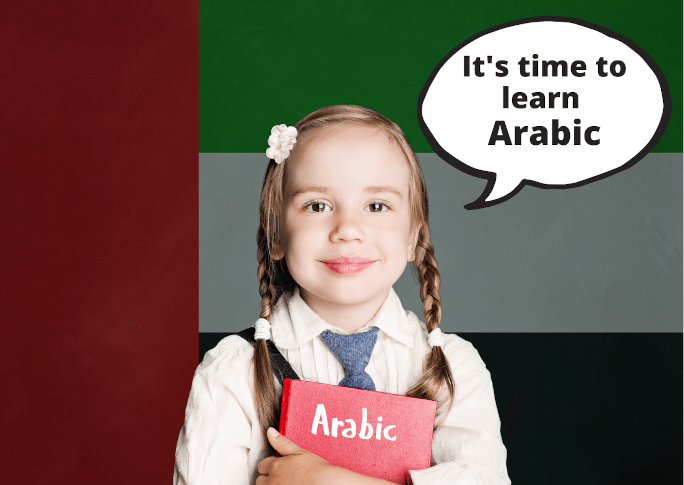Teaching Arabic for Non-Arabic Speaking Children: Challenges and Solutions
As one of the fastest growing languages in the world, the Arabic language is increasingly becoming a second language choice for parents to teach to their Non-Arabic Speaking Children (NASC).
Not only because it’s the official/co-official language of 26 countries, and its different dialects are spoken by around 422 million speakers making it one of the five most spoken languages in the world, but also because of the social and political circumstances that the Arab world witnesses.
Here are few other reasons that helped raise the status of Arabic as second language choice for NASC:
- Learning any language at a young age is important and more useful than learning it later. As the brain comprehends and absorbs information easier and faster, thus starting learning Arabic at an early stage can make a great difference.
- Learning Arabic gives you insights about “Islam”, the second largest religion in the world. That’s why, Muslim families living in a non-Arab country want their children to learn Arabic, the language of the Quran, to stay connected to their Islamic Culture.
- Learning a language helps you understand its culture as well. So, when you learn Arabic, you can form a better perception of the Arab culture enabling the child to understand the people around him more consciously. A reason for which foreigners working and living in Arab countries want to immerse their children in the culture of the region by learning its language.
However, many factors contribute to the language acquisition and growth of the child; some of them are related to the child and others to his family and the learning methods.
1- Individual differences:
Teaching Arabic to an Arab child is different than teaching it to NASC. Lessons provided to NASC need to be easier and the learning model needs to be adjusted to the child’s linguistic capabilities. Moreover, the NASC may develop some learning difficulties that may or may not exist while learning their mother tongue. That’s why identifying them by asking the right questions in an early stage of the learning process is going to be very useful.
Questions like:
- What type of mistakes does the child make?
- What are the sounds they have trouble pronouncing?
- Are the mistakes the child is making related to memory, speech problems, recognition problems or maybe motivation?
2- Family and environment:
NASC are not exposed to Arabic the way they are exposed to their mother tongue that they hear since the day they were born.
Being interested in teaching your child a second language entails that you provide the necessary environment for their language acquisition. They need all your support and effort to make it work. Being in Arabic speaking country can be very useful since the child can find the opportunity to speak the language with locals, read the signs in the street and enjoy a real Arab atmosphere.
Also, NASC will sure make a bigger effort when seeing their parents showing interest and commitment in studying the language themselves.
3- Teaching methods:
As a teacher for NASC, you need to make sure that the child has the motivation to learn. Here are some challenges and how to address them.

a – Lack of motif or interest:
The traditional way of learning can be boring to the child. Therefore the learning materials need to be attractive to the child by using big pictures, different fonts, colors and shapes and including different activities. At home, playing their favorite games in Arabic could be very helpful. Also, the teacher should use tools to help making the lesson more fun. Such as: puzzles, toys, pictures and videos as all these things draw more attention.
b – Reading problems:
Many children find reading in Arabic difficult and boring. To solve this problem, tagging along pictures or audio could be fun for them as it makes the text or the story more alive. And here are some websites for free online children books in Arabic:
https://www.alefbata.com/stories
https://www.alarabimag.com/212/%D9%82%D8%B5%D8%B5-%D8%A3%D8%B7%D9%81%D8%A7%D9%84/
https://download-children-pdf-ebooks.com/
and if you would like to buy some books for your kids, here are some websites:
https://www.shoroukbookstores.com/books/kids
c – Lack of practice:
Practice is the most important thing during learning any language and here are some fun ideas for it:
- All kids love watching cartoons and TV shows so, if they watch them in Arabic, it would be much more useful and help them be fluent in speaking. As well as learning new vocabularies continuously.And here are some websites and channels of kids’ shows: http://www.arabic-toons.com/cartoon.phphttps://www.youtube.com/user/spacetoononline/videos
https://www.youtube.com/c/zadalhorof
and here you’ll find some educational channels in Arabic:
https://www.youtube.com/c/learn2kids
https://www.youtube.com/c/Rawdah
https://www.youtube.com/c/LearnWithZakaria
- b. Another thing that would help kids to practice more is a study group or having language Exchange with a friend especially if the child lives in an Arab country.
- c. Language apps also could push the kid forward in learning the languages, as they present the information with pictures and audios and even quizzes! Making them much more fun to use.
- d. Flash cards for your kid. It’s a fun way of repeating and memorizing vocabulary.
Finally, if you have decided to teach your child Arabic and give them a great learning experience, contact us on the website.

For online lessons, visit our online courses website: www.arabiclanguageonline.com.
Join the huge family of Arabic speakers around the world
Learn Arabic and have a life-changing experience


